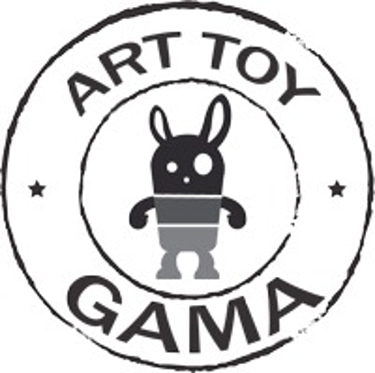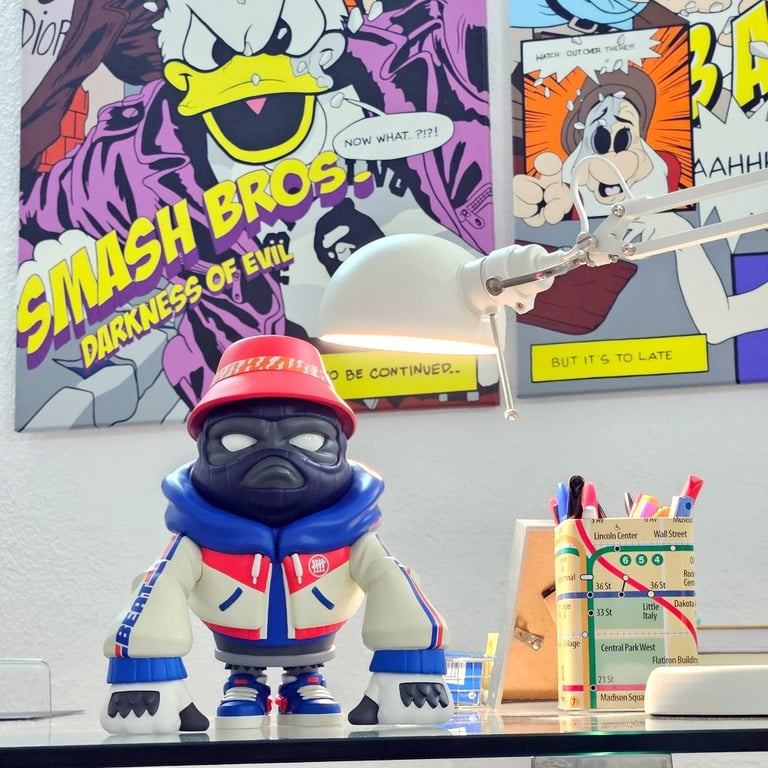We didn’t lose our inner child. We turned it into ArT Toys and More...with purpose.
🌐 Art Toys, Internet & the Power of Connection #00014 Art Toy Files
How the Internet Helped Turn a Niche into a Global Movement. And Why the Real Challenge Now Is Cutting Through the Noise
ART TOY FILES
Sergio Pampliega Campo & Cristina A. del Chicca
Uncovering the Stories, Creators and Culture Behind #ArTToys
An Art Toy Gama Perspective
In every era, Art finds the tools it needs to survive.
Sometimes it’s a wall in a cave.
Sometimes it’s a brush and a canvas.
And sometimes, it’s a screen.
For the ArT Toy Movement, that screen changed everything.
When the first ArT Toys began to emerge in the late '90s, from the underground scenes of Tokyo and Hong Kong, most people didn’t even know what to call them. Were they Toys? Sculptures? Objects? Protest? Pop?
They were all of that.
But more importantly: they were Art that traveled fast.
✦ The Internet Didn’t Just Spread Art Toys.
It Shaped Them.
Back then, blogs, early forums and websites allowed artists to bypass traditional galleries and connect directly with collectors around the world.
Suddenly, You didn’t need to be part of a Scene to discover it.
You just needed a connection.
The web became the first real Dis(Play) platform:
✹ A space where artists could share their work without permission.
✹ Where collectors could discover and feel part of a global underground.
✹ And where a vinyl figure in Hong Kong could find a home in Medellin, Santiago de Chile, Buenos Aires, Hondarribia, Berlin, Vitoria or Bilbao.
Social networks took this further.
Flickr. Tumblr. Then Facebook. Instagram. Discord. Telegram.
Each wave brought new layers of visibility, and new ways for creators to become their own curators, editors, and even brands.
📲 But With Visibility Came Noise. And Risks.
Today, the tools are there.
More than ever before.
But so is the overload.
Too many posts. Too many drops. Too many copies of copies.
Sometimes, the voice of the artist gets buried in the algorithm.
Sometimes, we scroll past a masterpiece without even knowing it.
And sometimes, visibility becomes vanity, instead of vision.
At Art Toy Gama, we’ve seen it from the inside.
We’ve witnessed how easy it is to confuse virality with value.
And how difficult it is, now more than ever, for artists to stand out without shouting.
🧠 So What Now?
We believe the question isn't just how to be seen.
It's how to be understood.
In a hyperconnected world, it's not enough to post.
You have to communicate meaning.
You have to create Memory.
You have to build Dis(Play) with purpose.
We didn’t lose our inner child.
We turned it into Art, with meaning, with questions, with rebellion.
That’s why we exist.
To give context. To build archives.
To shape a Movement, not a trend.
📎 The Power, and the Challenge, of Social Media for Art Toy Culture
✔ It democratized collecting
✔ It created global community
✔ It launched new careers
✔ It redefined what an exhibition could be
But it also…
✘ Flooded the space with noise
✘ Made visibility dependent on popularity
✘ Rewarded repetition instead of risk
✘ Confused aesthetics with depth
The solution?
It’s not to run from it.
It’s to reclaim it.
To turn tools into platforms.
To build spaces, like this one, where stories matter more than likes.
🧩 We’re not just posting.
We’re archiving the Movement.
One figure.
One exhibition.
One creator.
One story at a time.
📩 Want to keep collecting ideas, perspectives and stories with us?
👉 Join the Newsletter to receive more reflections like this, new editorial series, and behind-the-scenes updates from Art Toy Gama.
Because this isn’t just about toys.
This is about everything they contain.
The First and Only Art Toy Newsletter Society in the World here: https://emails.arttoygama.com/l/email-subscription
📓 This post is adapted from an original story first published on our Tumblr blog in May 2016. We kept the truth. We just sharpened the edges.
Art Toys. Paintings. Fine Art Prints. Not what You expect.
Real collectors don't follow trends—they redefine them
We didn’t lose our inner child. We turned it into Art.
You collecting, or just hoarding what the algorithm spoon-feeds you?
contact
© 2025. All rights reserved.




